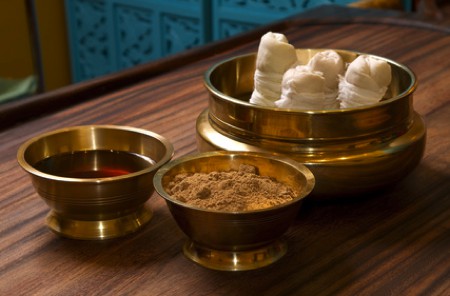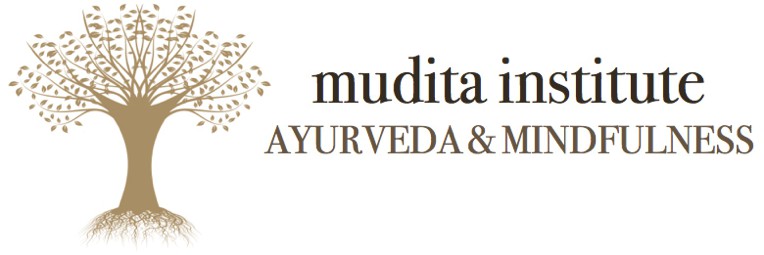By Kester Marshall
Panchakarma is one of the very special and unique gifts that Ayurveda has to offer. It is a highly sophisticated approach to Purification and Rejuvenation therapy that has been refined and developed over several thousand years for the treatment of illness and the attainment of longevity. The most important aspect of this approach is the presence of both Purification and Rejuvenation stages. Most of the time we tend to swing back and forth between the two in our desire for health, but it is their careful timing and integration that is essential.
According to Ayurveda all disease begins in the mind, and from there, the digestive tract. Try as we might, we often live in a way that doesn’t support the optimal functioning of mind and body. As a result, our physiological processes (governed by the activity of the Doshas) become imbalanced and our digestive function (Agni) is compromised. Once Agni is compromised we cannot digest our food efficiently and this leads to the accumulation of undigested waste (a sticky, heavy substance known as Ama). Ama, along with the imbalanced Doshas, moves from the digestive tract into the channels of the body and begins to infiltrate the tissues, causing dysfunction and eventually pathological change. From an Ayurvedic point of view this is the basic pathology of all disease.
To Purify the body effectively we must firstly ‘un-stick‘ this Ama, along with the excess Doshas, from their new home in the tissues and channels. Once ‘un-stuck’ they must then be encouraged back to the digestive tract where they can safely be removed. Although the Doshas behave well enough when they are operating harmoniously, once they are aggravated and leave the gut they become unruly, like a drunk in a bar. In this state, they cannot be forced to do anything; gentle persuasion and encouragement is the only way. It is therefore of the utmost importance that the right body/mind environment be established before Purification can take place. If it is attempted prematurely, or in the wrong way, we can become sick, depleted and experience potentially serious side effects.
During the process of Panchakarma, diet and daily routine are specially tailored to ensure that digestion (Agni) is supported and that there is no shock or disturbance to the body and mind. The herbal medicines and procedures are specifically chosen for each individual and the treatment is usually carried out as a live-in program over a 2-3 week period.
There are three main stages of treatment that are all extremely important and must be carried out correctly. The first is Purva karma and deals with establishing the right body/mind environment. It is the preparatory ‘un-sticking’ stage - a gently warming and supportive introduction using copious amounts of warm, medicated oil. This oil application involves massage, often carried out by several practitioners; other musculo-skeletal treatments; and a therapy known as Shirodhara where warm oil is poured in a constant stream across the forehead. The purpose of this is to deeply calm the mind and nervous system and lubricate the channels, freeing up the accumulated Doshas that are lodged in the tissues. The sage Charaka describes the importance of this stage using the analogy of a clay pot filled with water... if the pot has been properly oiled, when the water is tipped out (i.e. the excess Doshas), not a drop remains inside. Gentle sauna with medicated steam, that avoids heating the head, is then used to dilate and relax the channels of the body so that the Doshas can naturally flow, without force, back to the digestive track.
The second stage of treatment, known as Pradhana Karma, deals with the actual elimination of the Doshas and is the stage that most folk are a little squeamish about. The word Panchakarma literally means ‘Five Actions’ and refers to the five methods of Purification used to cleanse the Doshas from their sites. These are Vamana (emesis), Virechana (purgation), Vasti (enema), Nasya (nasal administration) and Rakta Mokshana (blood-letting).
Depending on the individual and their particular health imbalance, one or more of these Purification therapies may be used. It is important to note the difference between the application of these methods in Panchakarma and their use in other contexts. Here, the body/mind environment has been carefully prepared during the first stage, allowing the elimination of toxins to take place in a way that is not violent or stressful.
The final stage, Paschat Karma, is definitely a case of ‘last but not least’. Now that the slate is clean and there is a fresh foundation to build upon, the emphasis is on nurturing. This is the Rejuvenation stage of Panchakarma.
A diet consisting of light grain soups and simple foods is followed in order to strengthen Agni and herbal medicines along with adequate rest are taken to ensure the production of healthy tissues and a return to full strength.
It is important to remember that the Doshas and Ama affect us on all levels, mental as well as physical. In the same way Ama dampens and compromises our physical Agni it also dulls our mental digestion and obscures the clarity that is required to really see things ‘as they are’.
One of the main benefits of Panchakarma, in addition to the physical, is the creation of an internal environment that allows the mind to to move from a state of confusion and dividedness to one that is clear, calm and whole. It is only in this state that we are able to approach our desire for happiness in a way that is fruitful and sustainable.
Panchakarma is of great benefit for supporting the treatment of chronic disease, for the purpose of rejuvenation and longevity and is recommended as the best way of preparing ourselves when we are planning to have children. It is a ‘health retreat’ unlike any other - one that looks after our desire to be nurtured, supported and cared for, as well as working deeply and precisely to Purify and Rejuvenate the body and mind.
If you are in any doubt about your health please be sure to consult an Ayurvedic Practitioner or your local health physician. See our Clinic page for more information.

